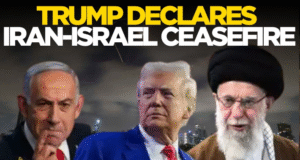
By Dr. Sameera Aziz
In an era marked by geopolitical turmoil and competing influences, China’s diplomacy is showing a subtle yet meaningful shift—strikingly reminiscent of Saudi Arabia’s distinguished approach: pragmatic, multilateral, and balance-driven.
This posture is evident in Beijing’s recent outreach to both India and Pakistan. On August 18–19, 2025, Chinese Foreign Minister Wang Yi visited New Delhi, where talks heralded a “steady development track” for India–China ties, with both sides agreeing to resume direct flights, issue journalist visas, and foster trade and cultural exchanges. They also discussed border de-escalation and boundary management, emphasizing mutual respect and stability.
Shortly afterward, Wang Yi traveled to Islamabad for the sixth round of the Pakistan–China Foreign Ministers’ Strategic Dialogue, where he reaffirmed China’s support for Pakistan’s sovereignty and development, and pledged to deepen strategic cooperation—particularly on regional security and counter-terrorism, with emphasis on CPEC (China–Pakistan Economic Corridor).
This balancing act—engaging both India and Pakistan in near-simultaneous outreach—reveals a calculated multilateral strategy. Rather than siding with one, China is positioning itself as a steady facilitator, echoing the Kingdom of Saudi Arabia’s long-established model.
Strengthening Global Partnerships Through Positivity
This new dimension of Chinese diplomacy appears to be inspired by the brilliant and pragmatic diplomacy of Saudi Arabia. It seems that China has adopted the Saudi model as a guiding reference. Just as China carefully maintains equilibrium between India and Pakistan, Saudi Arabia has long pursued a remarkably successful and practical diplomatic strategy. Whether in managing relations between India and Pakistan or balancing ties between China and the United States, the Kingdom has consistently demonstrated its unmatched ability to preserve stability and harmony.
Today, Saudi Arabia enjoys strong, constructive, and wide-ranging diplomatic ties with nearly every nation, promoting cooperation without enmity—whether within the Middle East or beyond. The Kingdom maintains positive relations with Iran, Yemen, Qatar, Turkey, and others, while firmly reiterating that no relations with Israel can be established until the Palestinian issue is justly resolved. Saudi diplomacy is built on the principle that meaningful change often comes not through noise, but through persistence, coordination, and foresight. Saudi Arabia is not merely reacting to the global order—it is actively helping to shape it. From leading OIC initiatives to launching megaprojects like NEOM, the Kingdom is redefining leadership in the Arab world and presenting a future-focused diplomatic model.
Championing Peace Across Borders
Saudi Arabia has repeatedly positioned itself as a pillar of peace—most notably amid heightened India-Pakistan tensions, when the Kingdom spearheaded behind-the-scenes diplomacy that led to meaningful dialogue and helped avert conflict between two nuclear nations, a peace initiative later acknowledged by U.S. President Donald Trump.
Strategic Brilliance in a Polarized World
In a world increasingly split between U.S.- and China-led blocs, Saudi Arabia has carved a unique role as a diplomatic bridge-builder. Instead of choosing sides, it has chosen strategy—deepening ties with both superpowers to secure regional peace and global cooperation. While many nations are forced into ideological corners, Riyadh works with the U.S. in defense and energy, while also expanding Belt and Road cooperation with China. This dual engagement reflects not confusion but confidence—diplomacy with purpose.
Economically, Saudi foreign policy is rooted in meaningful partnerships. Trade with China exceeded $107 billion in 2023, spanning energy, infrastructure, and technology. At the same time, the Kingdom upholds its historic alliance with the U.S., highlighted by $600 billion worth of agreements under President Donald Trump across defense, energy, and technology. For Riyadh, trade and diplomacy are not trophies but tools of peace. Saudi Arabia is not choosing East or West—it is choosing balance.
China’s Diplomacy: Reflecting the Saudi Blueprint
China’s recent diplomatic maneuvers to India and Pakistan encapsulate several aspects of the Saudi model:
- Equilibrium, Not Partisanship: Rather than doubling down on one regional partner, China offers both neighbors respectful engagement. By treating both India and Pakistan as “important neighbors,” Beijing is providing reassurance to each side that it holds a level-headed regional role.
- Strategic Pragmatism Amid Polarization: As global alignments shift—especially amid growing friction between India and the U.S., triggered by high tariffs—China positions itself not as an antagonist but as a stable alternative partner for regional economic and diplomatic needs.
- Connectivity and Economic Incentives: Engaging Pakistan through CPEC dialogue, and India via softening restrictions (e.g., on exports of fertilizers, rare earths, heavy machinery), China “de-risked” and re-activated key trade avenues—mirroring Saudi’s infrastructure-anchored Vision 2030 cooperation with China.
- Mediation and Regional Stability: By proactively tackling the boundary dispute with India and reinforcing support for Pakistan’s development, China subtly projects the role of a regional mediator, anchoring rather than exacerbating tensions.
Thus, China’s contemporary diplomacy—quiet, calibrated, and functionally multilateral—mirrors Saudi Arabia’s long-standing equilibrium diplomacy, making Beijing not just a global power-player, but a sophisticated regional peacemaker.
Implications: A Diplomatic Inflection Point
China’s adoption of this Saudi-inspired strategic equilibrium signals a maturing approach to international relations. This shift holds several profound implications:
- Mitigation of South Asia Instability: By engaging both India and Pakistan responsibly, China contributes to lowering regional volatility—opting for stability through inclusion rather than dominance.
- Redefined Great-Power Engagement: India’s delicate repositioning—maintaining ties with both the U.S. and China—parallels Riyadh’s balancing act. By providing alternative partnerships, China enables more multipolar and resilient regional architectures.
- Evolving Diplomacy for the Asian Century: Sino-Saudi alignment in global connectivity strategies (Belt and Road Initiative meets Vision 2030) and regional diplomacy indicates a broader shift toward functional, pragmatic nation-state diplomacy rather than ideological blocs.
Diplomacy with Purpose
Today, as Chinese Foreign Minister Wang Yi’s dual visits to New Delhi and Islamabad signal, China is weaving a diplomacy marked by balance, purpose, and vision—modeled not on confrontation, but on careful equidistance and dialogue. In doing so, it echoes the successful formula perfected by Saudi Arabia: forging stability through diversified engagement, foresight, and quiet confidence.
In a world riven by polarization, the future belongs to those who achieve influence not through coercion, but through calibrated, consistent, and constructive diplomacy. China’s latest moves suggest it is inspired by Saudi Arabia’s example, rising as a more nuanced and stabilizing force in Asia.
About the Author:
Dr. Sameera Aziz is a senior Saudi journalist, businesswoman, author, poet, and cross-cultural commentator based in Jeddah. Holding a PhD in Mass Media, she is one of the pioneers of female journalism in Saudi Arabia and a strong advocate for Vision 2030. She can be reached at: Consultant.sameera.aziz@gmail.com








